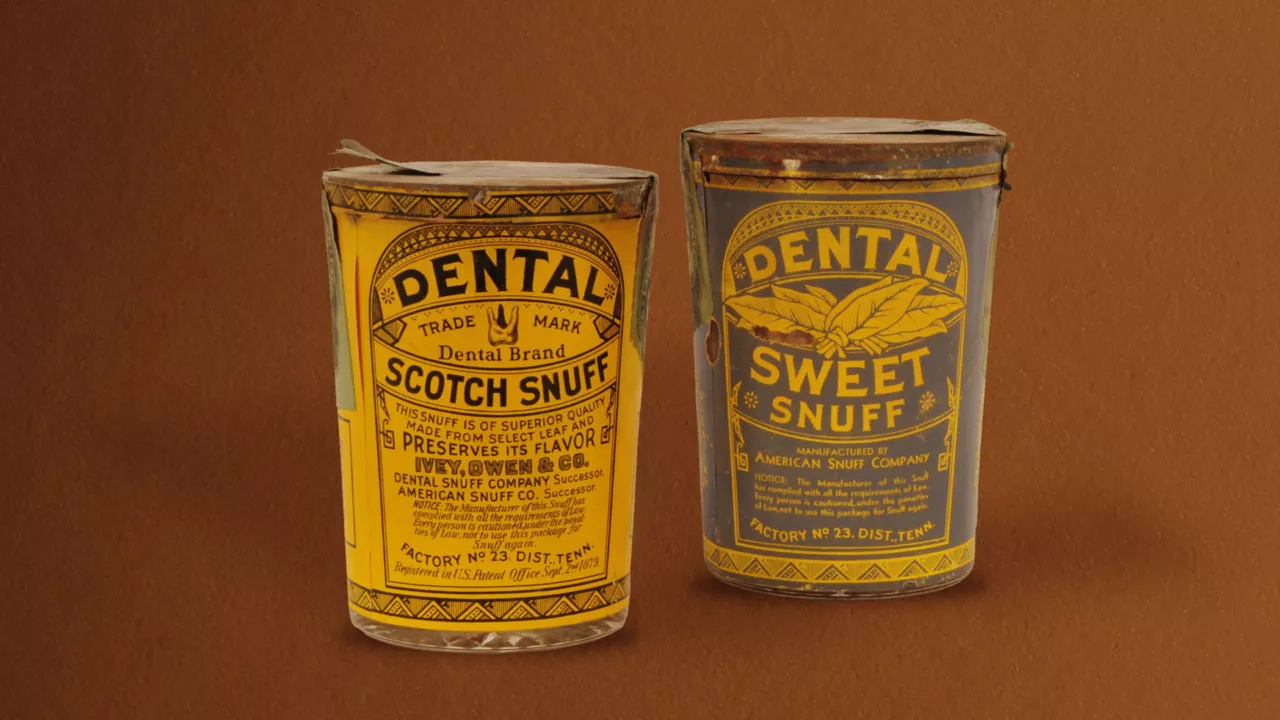This 1870s tobacco product claimed to cure toothache, neuralgia, scurvy, decay . . . and even whiten teeth. If that sounds counterintuitive, well, it is.


LARRY COHEN, Benco Dental’s chairman and chief customer advocate, has over the past half-century collected hundreds of unique dental artifacts, which reside at Benco’s home office in Pittston, Pennsylvania.
WE ALL KNOW that tobacco, in any form, is one of the worst things for our oral health. But back in the 1800s, miracle cures making highly dubious medical claims were peddled by snake-oil salesmen far and wide. So it was with Dental Scotch Snuff and Dental Sweet Snuff, both of which are still around today.
Given that tobacco use continues to decline nationwide, you might not even know what snuff is. It’s pulverized or powdered tobacco leaves that are typically flavored and/or scented. It was usually inhaled, giving the user a quick hit of nicotine as the tobacco reached the nasal membranes. However, as is the intended use here, it was also rubbed along the teeth and gums, which would seem (by 1870s logic, anyway) the perfect delivery mechanism for dental medicines.
The snuff you see here was invented by a Virginia dentist and Civil War veteran named Robert Withers Morgan. Af-ter first developing the supposedly anticariogenic Dental Chewing Gum (using “secret preventives”), Morgan went on to add those same ingredients to snuff. He never re-vealed his recipe, but it has been theorized that like many products of the day, cocaine was the secret ingredient, and the sweet flavoring was intended to cover the drug’s inherent bitterness.
Believe it or not, there are still sizable pockets of snuff us-ers in Europe who claim that it’s actually good for teeth because it neutralizes acids in the mouth. This zany the-ory was disproven in a 2013 study by Lena Hellqvist, a doctoral student at Sweden’s University of Gothenburg, but it’s crazy to consider that you can buy Dental Snuff to this day—minus the “secret ingredients”—and that some people still think tobacco is good as toothpaste at preventing caries.


